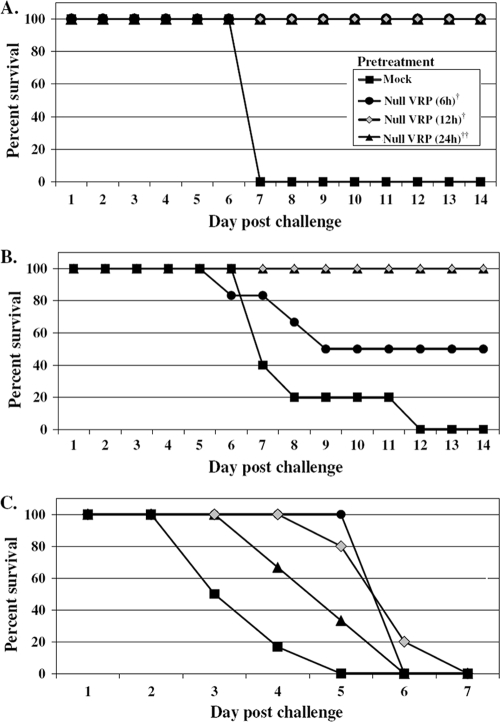FIG. 3.
VRP pretreatment prior to peripheral and intranasal challenge with virulent VEE protects mice from death and extends the average survival time of mice challenged intracranially. Adult BALB/c mice (5 to 6 mice per group) were pretreated by inoculation in the RRFP with 2 × 106 IU null VRP for 6, 12, or 24 h prior to peripheral challenge with 10 PFU of VEE in the opposing LRFP (A), intranasal challenge with 103 PFU of VEE (a dose necessary to achieve 100% mortality in mock-pretreated animals) (B), or intracranial challenge with 103 PFU of VEE (C). Mock-pretreated mice received diluent in the RRFP 6 h prior to challenge. Animals were monitored daily for morbidity and mortality. The ASTs following intracranial challenge were as follows (mean ± standard error): mock-pretreated mice, 2.7 ± 0 days; VRP-pretreated mice (6 h), 5.0 ± 0 days (P < 0.001); VRP-pretreated mice (12 h), 5.0 ± 0.3 days (P < 0.001); and VRP-pretreated mice (24 h), 4.0 ± 0.4 days (P < 0.05). One-way analysis of variance was used for statistical analysis performed on AST values following intracranial challenge of VRP-pretreated animals compared to mock-pretreated animals.

